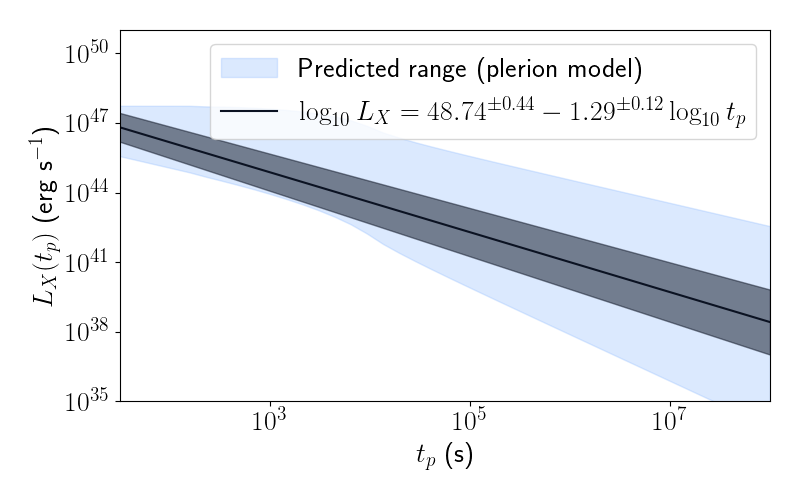Applying models of pulsar wind nebulae to explain X-ray plateaux following short gamma-ray bursts

Summary paper for the plerionic model of sGRB remnants
This recent publication in the proceedings of 16th Marcel Grossman Meeting was based on my presentation in the parallel session on Gamma-Ray Burst Correlations: Observational Challenges and Theoretical Interpretation.
Citation
Strang & Melatos (2021) Applying models of pulsar wind nebulae to explain X-ray plateaux following short gamma-ray bursts, Marcel Grossman Proceedings, accepted, arxiv.org/abs/2111.12844
Abstract
Many short Gamma-Ray Bursts (sGRBs) have a prolonged plateau in the X-ray afterglow lasting up to tens of thousands of seconds. A central engine injecting energy into the remnant may fuel the plateau. A simple analytic model describing the interaction of the magnetized relativistic wind from a rapidly-rotating magnetar with the surrounding environment can reproduce X-ray plateaux and instantaneous spectra. The model is analogous to classic, well-established models of young supernova remnants and applies the underlying physics to sGRB remnants. The light curve and spectra produced by the model are compared to observations of GRB 130603B. The spectra are also used to estimate parameters of the magnetar including its poloidal field strength and angular frequency. If combined with a gravitational wave signal, this model could provide insight into multimessenger astronomy and neutron star physics.
Summary
These proceedings and the associated presentation are a summary of work presented in Strang & Melatos (2019) and Strang et al (2021) developing and applying Bayesian inference methods to infer the parameters of millisecond magnetars surviving short gamma-ray bursts.
